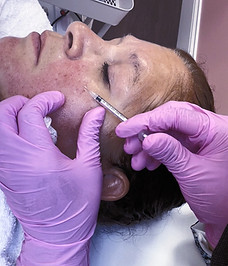
Platelet Rich Plasma
Platelet-rich plasma also known as PRP consists of two elements: plasma (liquid portion of blood), and platelets (a blood cell well-known for its clotting abilities). Platelets contain growth factors that can trigger cell reproduction and stimulate tissue regeneration. Platelet-rich plasma is simply blood that contains more platelets than normal.



Platelet-rich plasma has been used for many years on a wide range of conditions such as musculoskeletal injuries, post-surgical healing, and hair restoration. The idea is to increase the concentration of specific bioproteins (called growth factors) in a specific area to accelerate the healing process.
Platelet-rich plasma also known as PRP consists of two elements: plasma (liquid portion of blood), and platelets (a blood cell well-known for its clotting abilities). Platelets contain growth factors that can trigger cell reproduction and stimulate tissue regeneration. Platelet-rich plasma is simply blood that contains more platelets than normal.
To create platelet-rich plasma a blood sample collected from the patient and placed into a device called a centrifuge that rapidly spins the sample, separating out the other components of the blood from the platelets and concentrating them within the plasma. The sample is spun twice.
PRP is often paired with microneedling, rather than relying on synthetic products PRP uses your own blood to enhance healing and repair. During microneedling the ultrafine needles of the handpiece penetrate the skin's surface and create microchannels. The PRP is applied on the skin during microneedling to help the handpiece glide smoothly while entering the skin. PRP may also be injected using a small guage hypodermic needle for added benefits. For PRP treatments of the face, you can expect to see some results starting at 2 or 3 weeks.
Since PRP is made up of your own cells and plasma there is low risk for allergic reaction, this is considered a low risk procedure and does not usually cause major side effects. Some patients might experience redness, bruising and swelling at the injection site.
